Znajdują się Państwo na stronie GDDKiA.gov.pl. Poniżej prezentujemy instrukcję instalacji darmowego czytnika ekranu wykorzystującego syntezator oparty na głosie aktora. Dotyczy to systemów operacyjnych rodziny Windows, ponieważ systemy operacyjne firmy Apple posiadają już wbudowane rozwiązanie o nazwie Voice Over.
Instalacja darmowego czytnika ekranu:









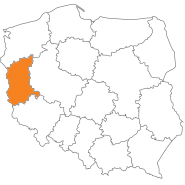
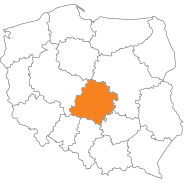

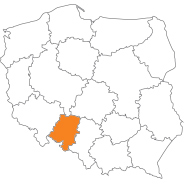
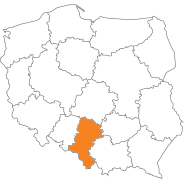
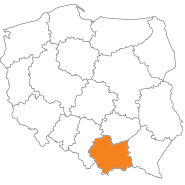
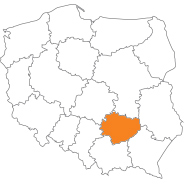
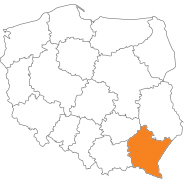
Oddział w Bydgoszczy
ul. Fordońska 6
85-085 Bydgoszcz
tel. centr. 52 323 45 00
fax 52 323 45 04
NIP 554-22-52-485
e-mail: sekretariat_byd@gddkia.gov.pl
Oddział w Gdańsku
ul. Subisława 5
80-354 Gdańsk
tel. centr. 58 511 24 00
fax 58 511 24 05
NIP 584-24-56-536
e-mail: sekretariat_gdansk@gddkia.gov.pl
Oddział w Białystoku
ul. Zwycięstwa 2
15-703 Białystok
tel. centr. 85 664 58 00
fax 85 651 37 83
NIP 542-27-52-914
Oddział w Katowicach
ul. Myśliwska 5
40-017 Katowice
tel. centr. 32 258 62 81
fax 32 259 87 10
NIP 954-24-02-923
e-mail: kat_sekretariat@gddkia.gov.pl
Oddział w Kielcach
ul. Paderewskiego 43/45
25-950 Kielce
tel. 41 34 03 900, 41 345 74 31
fax 41 366 48 04
NIP 657-03-86-703
e-mail: sekretariat_kielce@gddkia.gov.pl
Oddział w Krakowie
ul. Mogilska 25
31-542 Kraków
tel. centr. 12 417 25 00
fax 12 411 01 18
NIP 675-12-72-475
e-mail: sekretariat_krakow@gddkia.gov.pl
Oddział w Lublinie
ul. Ogrodowa 21
20-075 Lublin
tel. 81 532 70 61
fax 81 743 71 68
NIP 712-24-27-134
e-mail: sekretariat_lublin@gddkia.gov.pl
Oddział w Łodzi
ul. Irysowa 2
91-857 Łódź
tel. centr. 42 233 96 00
fax 42 233 96 08
NIP 725-17-13-273
e-mail: sekretariat_lodz@gddkia.gov.pl
Oddział w Olsztynie
ul. Warszawska 89
10-083 Olsztyn
tel. centr. 89 521 28 00
fax 89 527 23 07
NIP 739-32-79-711
Oddział w Opolu
ul. Niedziałkowskiego 6
45-085 Opole
tel. centr. 77 401 63 00
fax 77 454 44 68
NIP 754-00-03-773
e-mail: sekretariat_opole@gddkia.gov.pl
Oddział w Poznaniu
ul. Siemiradzkiego 5a
60-763 Poznań
tel. centr. 61 866 88 21
fax 61 864 63 69
NIP 779-21-73-262
e-mail: sekretariat_poznan@gddkia.gov.pl
Oddział w Rzeszowie
ul. Legionów 20
35-959 Rzeszów
tel. centr. 17 853 40 71 do 74
fax 17 853 64 84
NIP 813-11-06-223
Oddział w Szczecinie
Al. Bohaterów Warszawy 33
70-340 Szczecin
tel. centr. 91 432 53 00
fax 91 484 39 97
NIP 852-23-53-687
Oddział w Warszawie
ul. Mińska 25
03-808 Warszawa
tel. centr. 22 209 25 00
fax 22 698 60 45
NIP 113-20-97-244
Oddział w Wrocławiu
ul. Powstańców Śląskich 186
53-139 Wrocław
tel. centr. 71 334 73 00
fax 71 367 17 69
NIP 899-24-41-331
Oddział w Zielonej Górze
ul. Boh. Westerplatte 31
65-950 Zielona Góra
tel. centr. 68 327 10 68
fax 68 325 34 68
NIP 929-01-16-588
e-mail: sekretariat_zga@gddkia.gov.pl
 Archive 2012
Archive 2012The results of the tests conducted by the GDDKiA laboratories are shocking – more than 90 percent of the cracks on the A2 route resulted from the obvious construction malpractice – the improper technological junctions of the particular layers of the road surface or the improper saw cutting of the layers of the motorway.
Why did the cracks appear so suddenly, in that many places at the same time? The cracks were initiated under the influence of very low temperatures in the weakest construction places, so mostly where the technological joint was not sealed or the saw cut was too deep. The so-called notch effect appeared, so, simply saying, the construction of the road was weakened. The accumulation of the stress led to the uncontrolled extension of the road and, as a result, the cracks appeared. The scale of the problem is a result of the consequent negligence of the contractors – the lack of sealing the technological joints, cutting the underlying layer of the surface, allowing the heavy goods vehicles traffic on the unfinished road.
The cracks could be avoided in a simple way. It would have been enough to clean the edges of the surface after finishing the phase of works, cut the edge of the surface evenly and to a proper depth, seal the technological joints, maintain the construction site clean and not allow heavy goods vehicles traffic on the uncompleted construction. Those simple methods, known already since the seventies of the last century, are enough to build a good road in a technology which ensures there will be no ruts – which are the incubus of the roads build of so-called soft asphalt.
The elimination of the ruts was the objective of the work of the Polish Road and Bridge Research Institute on the asphalt concrete of a high stiffness modulus, used for the first time 25 years ago in France. Adjustment of the French method, by RBRI, to the Polish conditions by the use of softer asphalt than that intended for the French conditions, was commissioned by the General Directorate for National Roads and Motorways. Such composition provided an even surface of the road without any ruts.
The composition was used in Poland for the first time in 2002 on the experimental section of S5 road. The experiment succeeded and due to that, already since 2003, design firms have begun to widely introduce the layers of the High Stiffness Modulus (HMAC). Since that time the High Modulus technology was no longer considered experimental and became a norm used not only on Polish, but also Czech, Slovak, French and Spanish roads.
In the Slovak climate, identical with the Polish weather conditions, the High Modulus technology was successfully used for example on the R1 motorway from Nitra to Bańska Bystrzyca, opened for traffic in the autumn last year. As the Slovak road administration ensures, the 40-kilometres road section, did not show any cracks in the laboratory tests.
Also in Spain the High Modulus is used widely and successfully. Furthermore, the High Modulus technology is recommended by the Spanish Research Institute (CEDEX) due to the possibility of obtaining the savings – both in construction and maintenance